Abstract
1. Perfusion of bovine adrenal glands with a potassium-free Tyrode solution results in an increased spontaneous release of catecholamines and an increased response to stimulation with carbamylcholine.
2. Perfusion with a Tyrode solution containing 70 mM-KCl causes a marked secretion of catecholamines and a subsequent inhibition of secretion in response to stimulation with carbamylcholine.
3. Perfusion with sodium-free media abolishes or severely reduces the secretory response of the gland to carbamylcholine and to 70 mM-KCl although the basal secretion shows an initial rise.
4. Perfusion with sodium-deficient media permits some retention of the secretory response.
5. A possible role for intracellular sodium ions in the secretion of catecholamines is discussed.
Full text
PDF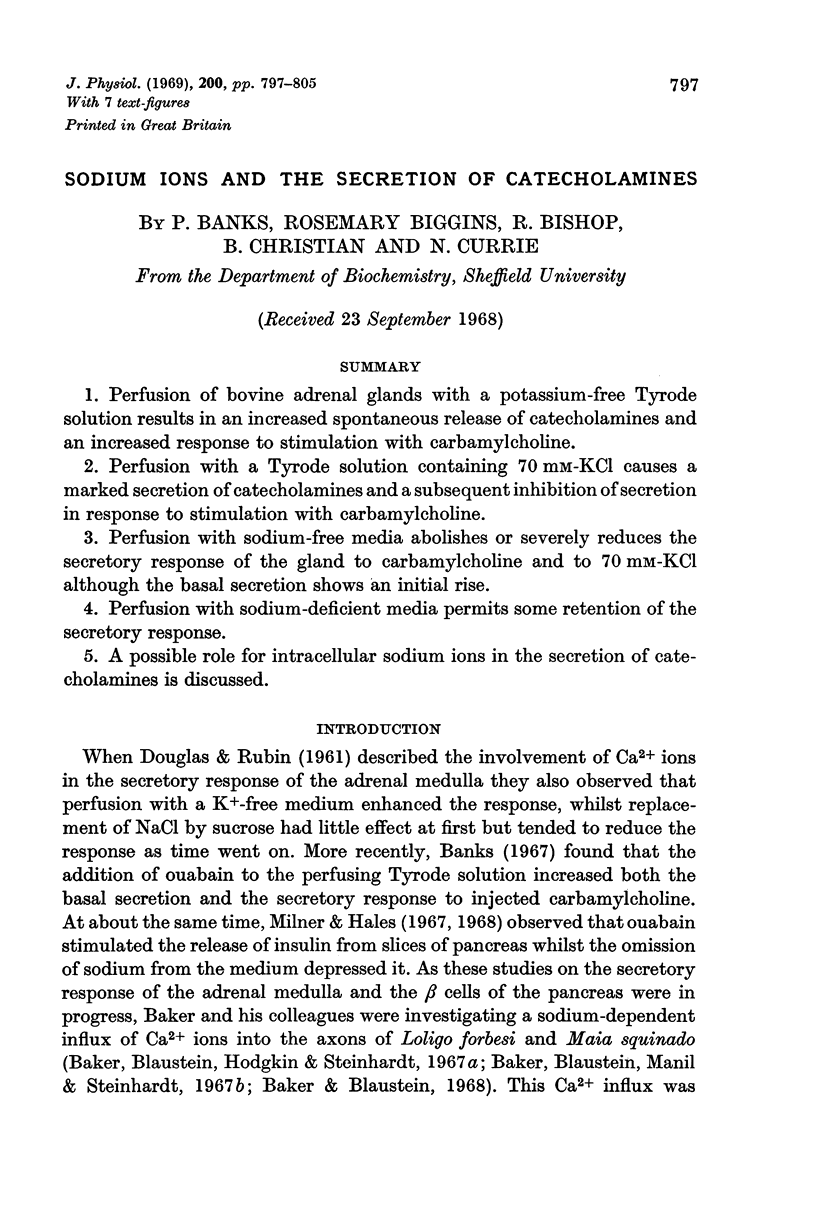
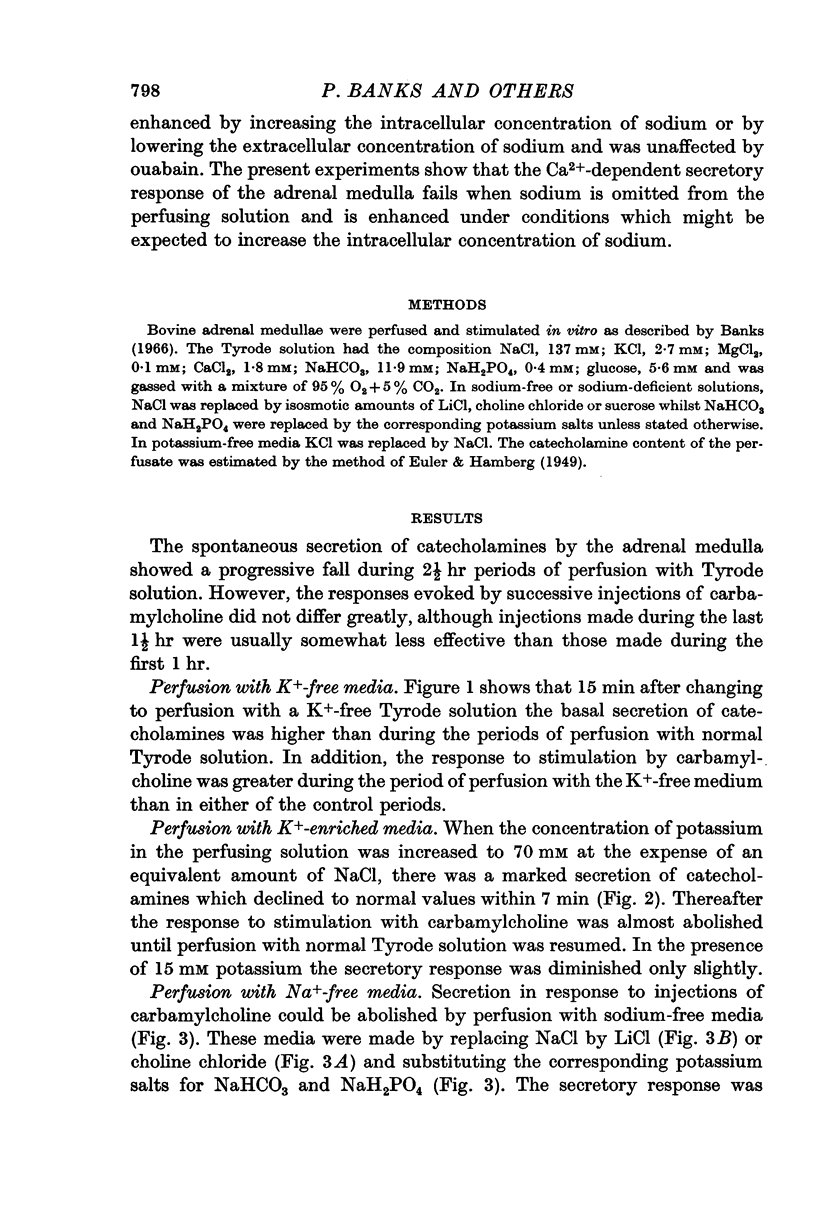
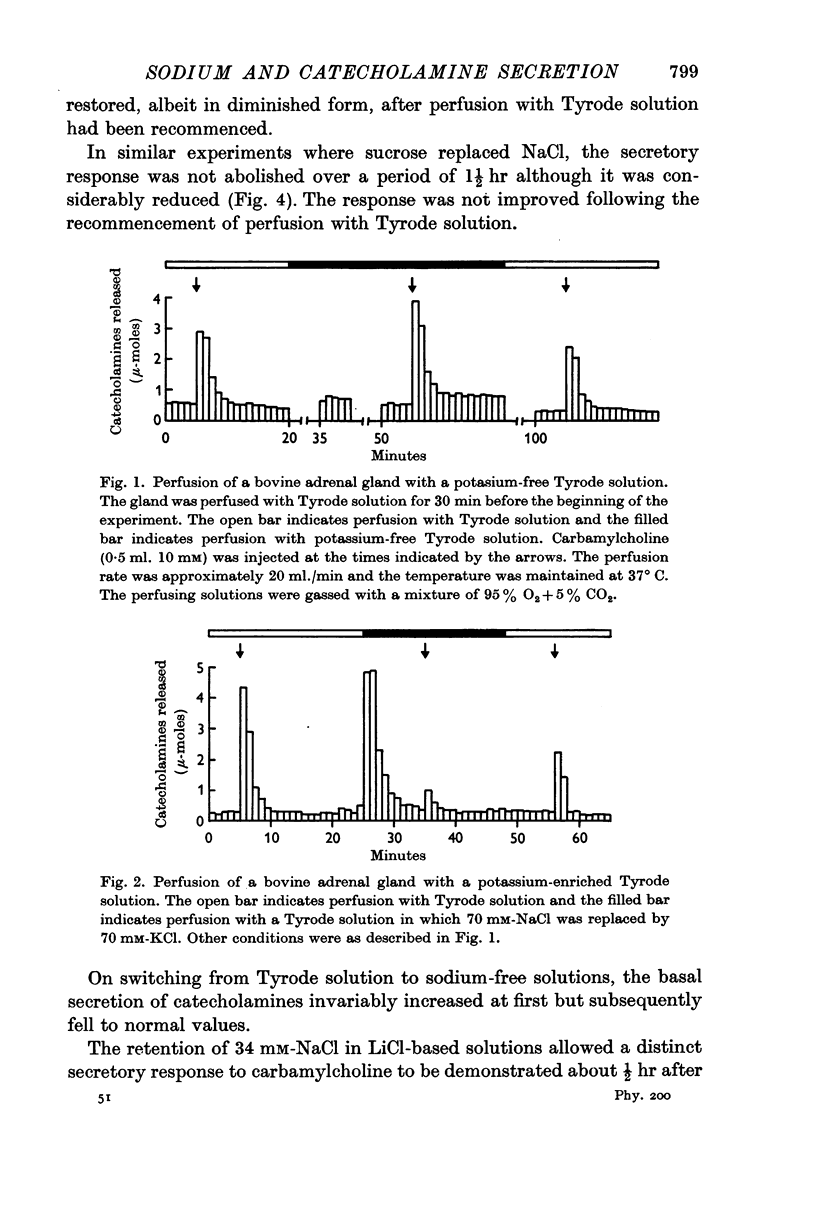
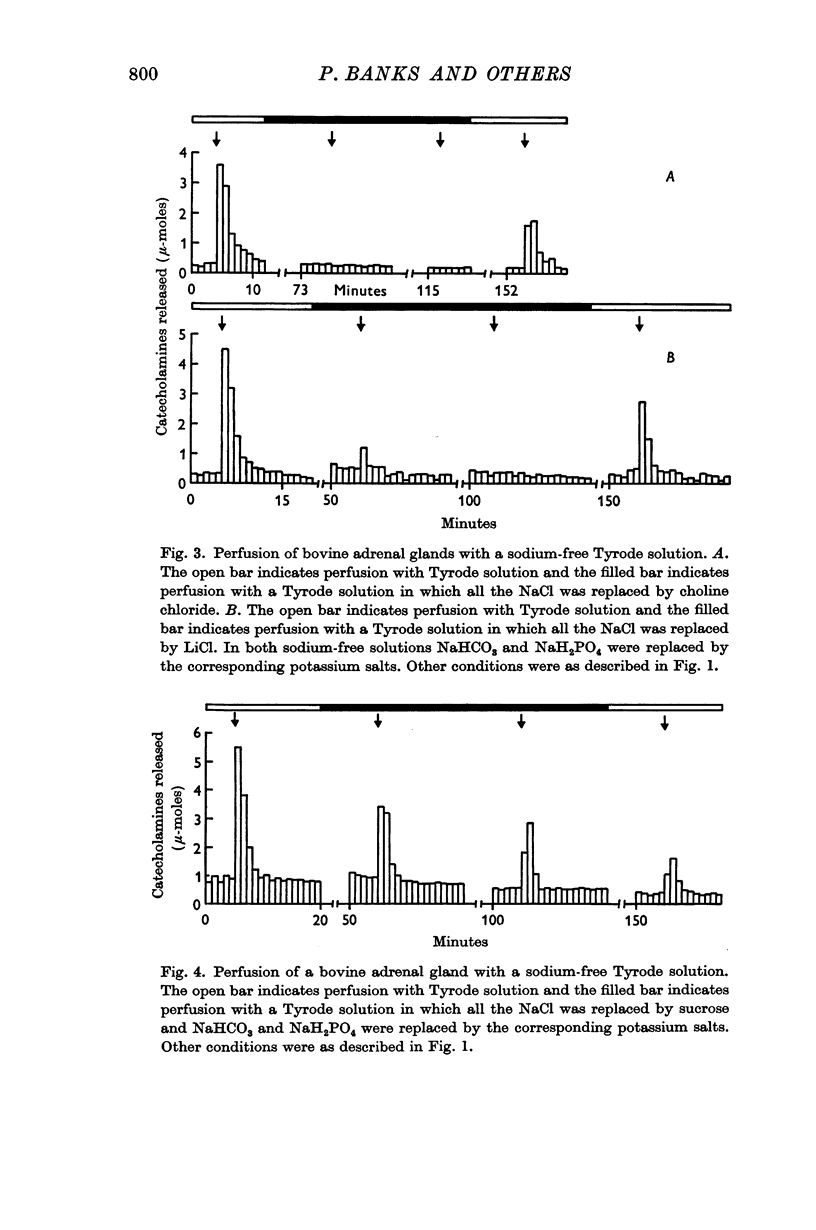
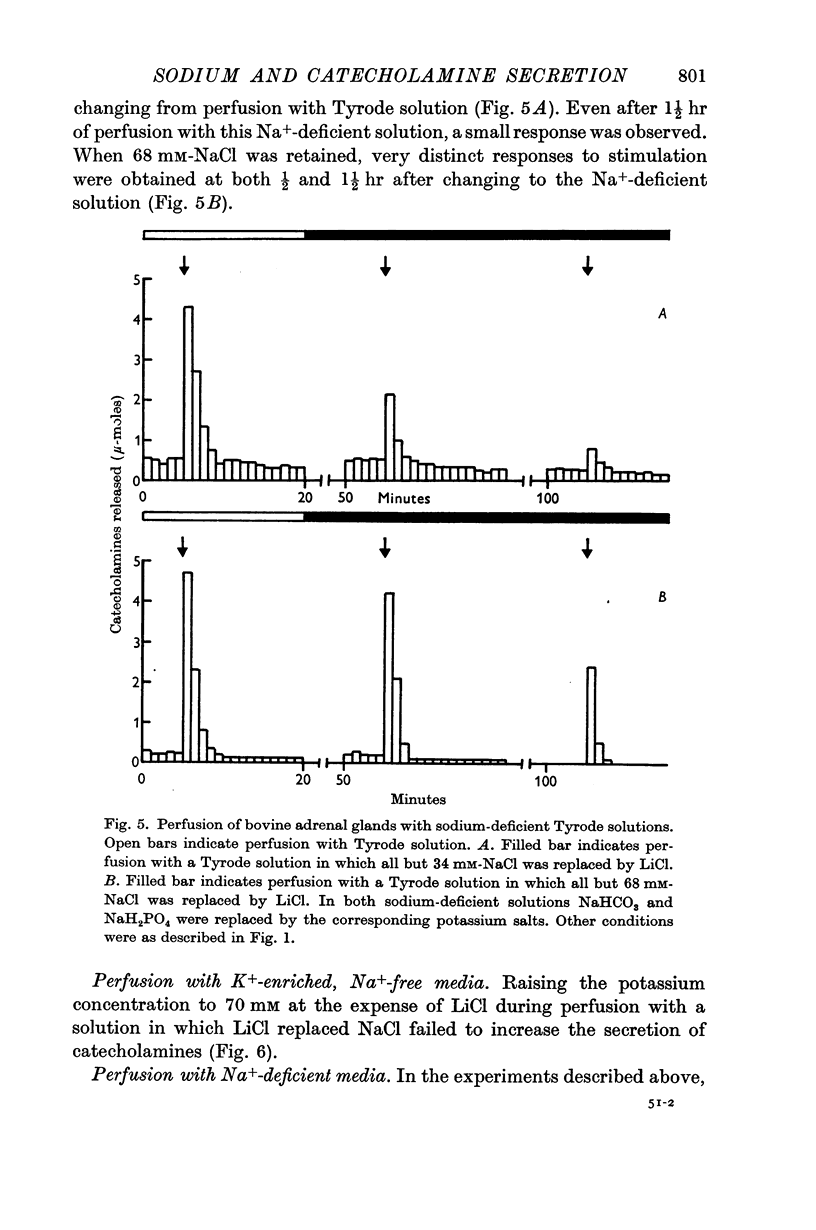
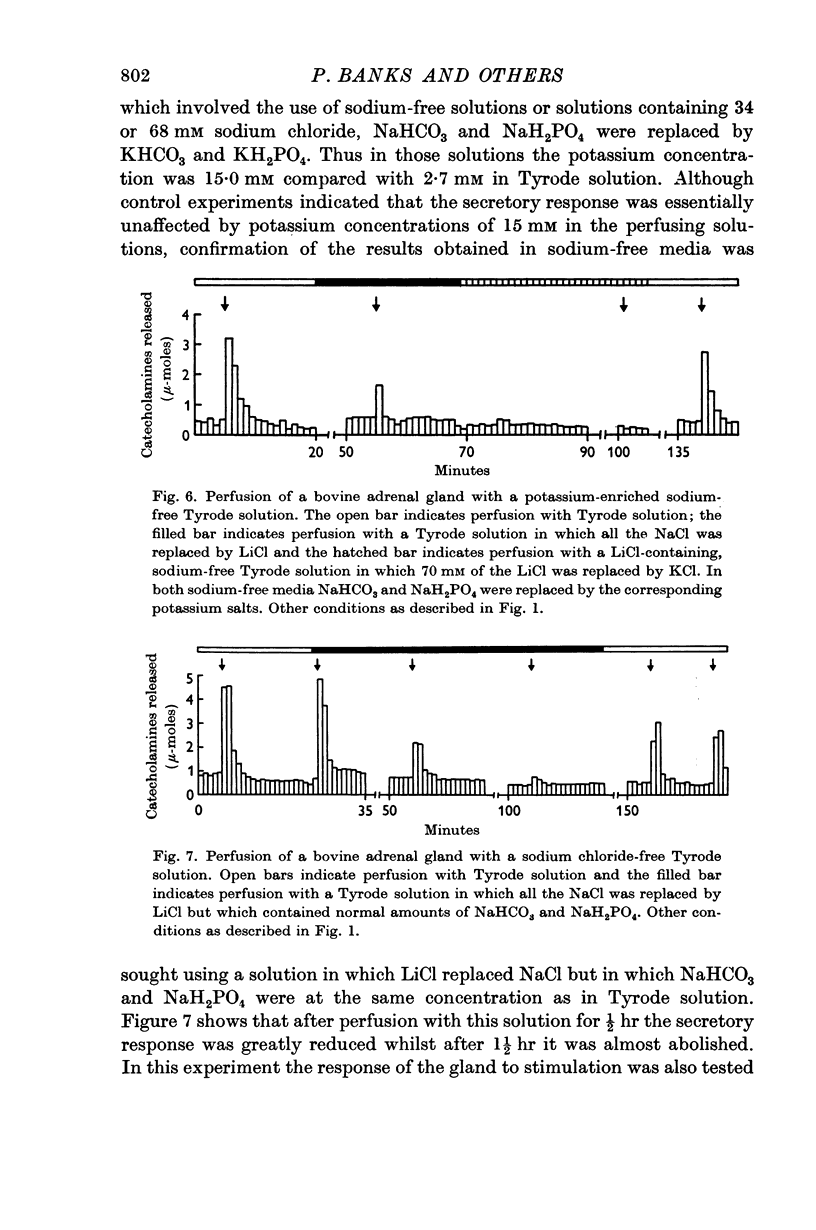
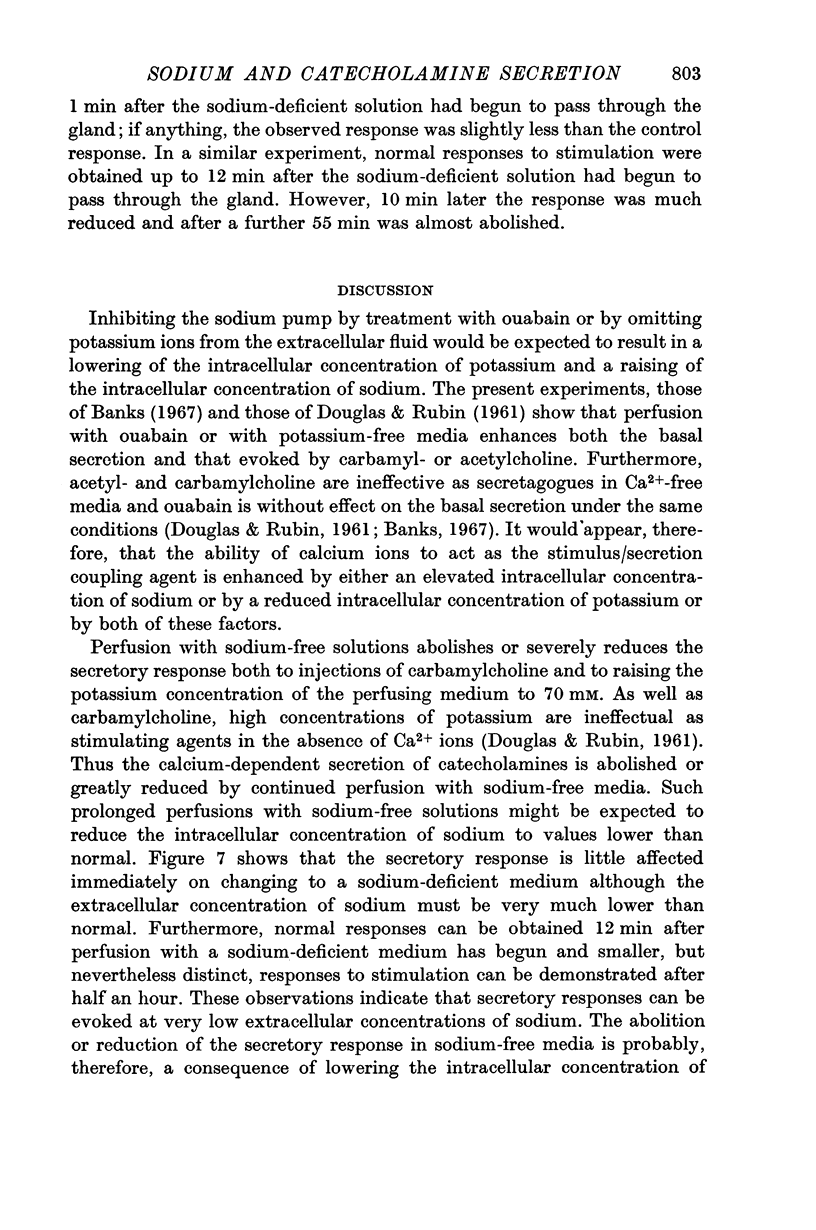
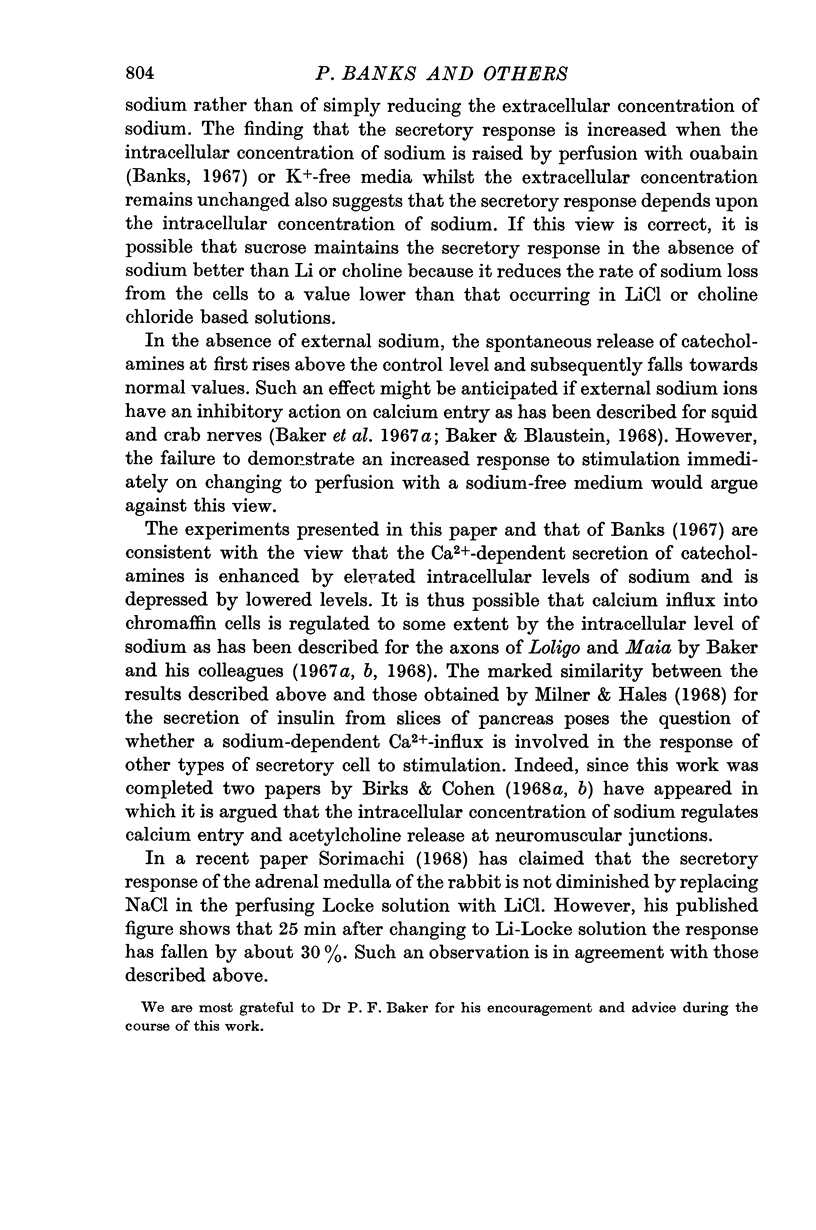
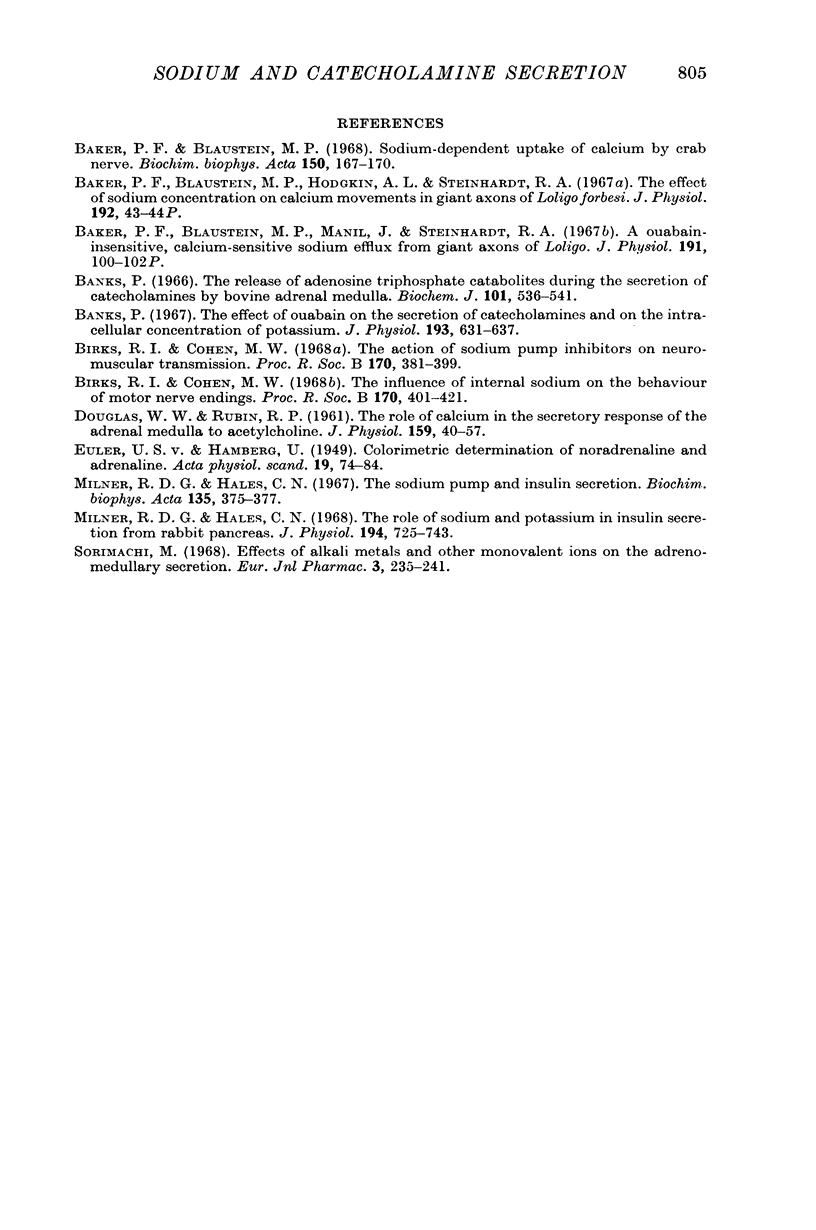
Selected References
These references are in PubMed. This may not be the complete list of references from this article.
- Baker P. F., Blaustein M. P., Manil J., Steinhardt R. A. A ouabain-insensitive, calcium-sensitive sodium efflux from giant axons of Loligo. J Physiol. 1967 Jul;191(2):100P–102P. [PMC free article] [PubMed] [Google Scholar]
- Baker P. F., Blaustein M. P. Sodium-dependent uptake of calcium by crab nerve. Biochim Biophys Acta. 1968 Jan 3;150(1):167–170. doi: 10.1016/0005-2736(68)90023-0. [DOI] [PubMed] [Google Scholar]
- Banks P. The effect of ouabain on the secretion of catecholamines and on the intracellular concentration of potassium. J Physiol. 1967 Dec;193(3):631–637. doi: 10.1113/jphysiol.1967.sp008383. [DOI] [PMC free article] [PubMed] [Google Scholar]
- Banks P. The release of adenosine triphosphate catabolites during the secretion of catecholamines by bovine adrenal medulla. Biochem J. 1966 Nov;101(2):536–541. doi: 10.1042/bj1010536. [DOI] [PMC free article] [PubMed] [Google Scholar]
- Birks R. I., Cohen M. W. The action of sodium pump inhibitors on neuromuscular transmission. Proc R Soc Lond B Biol Sci. 1968 Jul 9;170(1021):381–399. doi: 10.1098/rspb.1968.0046. [DOI] [PubMed] [Google Scholar]
- Birks R. I., Cohen M. W. The influence of internal sodium on the behaviour of motor nerve endings. Proc R Soc Lond B Biol Sci. 1968 Jul 9;170(1021):401–421. doi: 10.1098/rspb.1968.0047. [DOI] [PubMed] [Google Scholar]
- DOUGLAS W. W., RUBIN R. P. The role of calcium in the secretory response of the adrenal medulla to acetylcholine. J Physiol. 1961 Nov;159:40–57. doi: 10.1113/jphysiol.1961.sp006791. [DOI] [PMC free article] [PubMed] [Google Scholar]
- Hales C. N., Milner R. D. The role of sodium and potassium in insulin secretion from rabbit pancreas. J Physiol. 1968 Feb;194(3):725–743. doi: 10.1113/jphysiol.1968.sp008433. [DOI] [PMC free article] [PubMed] [Google Scholar]
- Lloyd S., Pickford M. The effect of oxytocin and adrenaline on blood flow in the hind limb of the dog following chronic lumbar sympathectomy. J Physiol. 1967 Sep;192(1):43–52. doi: 10.1113/jphysiol.1967.sp008286. [DOI] [PMC free article] [PubMed] [Google Scholar]
- Milner R. D., Hales C. N. The sodium pump and insulin secretion. Biochim Biophys Acta. 1967 May 2;135(2):375–377. doi: 10.1016/0005-2736(67)90136-8. [DOI] [PubMed] [Google Scholar]
- Sorimachi M. Effects of alkali metal and other monovalent ions on the adrenomedullary secretion. Eur J Pharmacol. 1968 Jun;3(3):235–241. doi: 10.1016/0014-2999(68)90136-2. [DOI] [PubMed] [Google Scholar]


